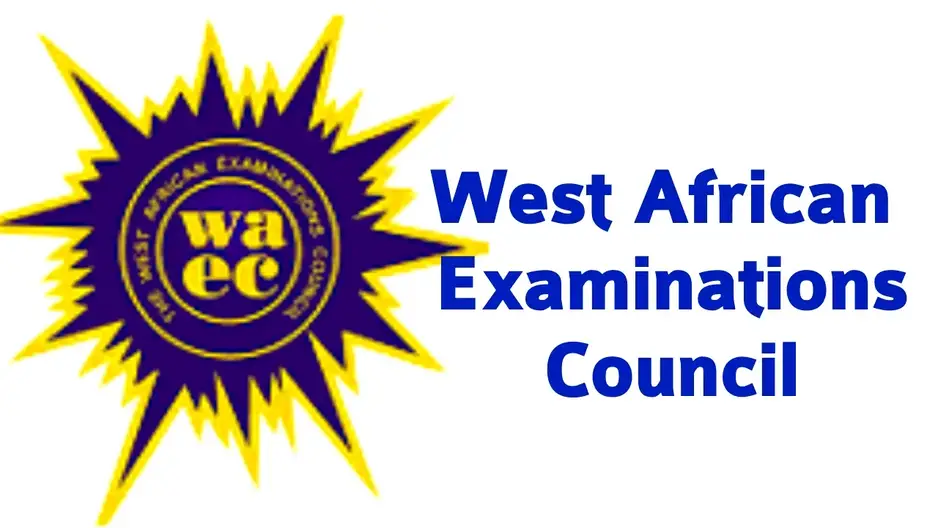
Understanding the WAEC syllabus for Commerce is essential for preparing for the examination. This syllabus outlines the aims and objectives, along with notes and format for the Commerce exam.
Studying the Commerce syllabus is crucial for effective exam preparation, as it provides a roadmap of the topics to cover and highlights key concepts to focus on.
Attempting to prepare for the exam without utilizing the Commerce syllabus is like tending to a farm without proper agricultural tools – it’s unlikely to yield productive results.
Ensure that you kickstart your exam preparations by thoroughly reviewing the syllabus.
This post includes the Commerce syllabus and recommended textbooks from the West African Examination Council (WAEC).
Feel free to ask any questions you may have in the comment section. I’m here to help!
WAEC Commerce Syllabus
There will be two papers, Paper I and Paper 2, both of which will constitute a composite paper to be taken at one sitting.
PAPER I: Will consist of fifty multiple-choice questions to be answered in 50 minutes for 50 marks.
PAPER II: Will consist of eight essay type questions out of which candidates will be required to answer any five within 2 hours for 100 marks.
| S/No | Contents | Notes |
|---|---|---|
| 1. | INTRODUCTION | Definition of Commerce and E-Commerce History/Background of Commerce Scope of Commerce and E Commerce Functions of Commerce and E-Commerce |
| 2. | OCCUPATION | Meaning of Occupation Types;- Industrial, Commercial, Service Occupation Factors that determine types of occupation/employment Career Opportunities |
| 3. | PRODUCTION | Meaning Factors – land, labour, capital and entrepreneurship Types:- Primary, Secondary and Tertiary production Division of labour/specialization meaning types advantages and disadvantages, limitation Inter-relationship between production and exchange |
| 4. | BUSINESS UNITS | Meaning and objectives of business Forms of business units Sole proprietorship, Partnership, Co-operative Societies, Credit Union and Thrift Societies, Public enterprises, Companies – Types, Formation, characteristics, comparison, advantages and disadvantages Sources of capital of each form of business Meaning and purpose of – Amalgamations, – Mergers and acquisitions – Trust, – Holding companies and Subsidiaries – Consortium and Cartel Dissolution/Liquidation of Companies/Partnership. |
| 5. | TRADE ASSOCIATIONS | Aims and functions of Trade Association Chamber of Commerce, Employers Association Consumer Association/Consumerism |
| 6. | BUSINESS CAPITAL AND PROFITS | Meaning and types – Authorized/Registered/Normal capital, called-up, paid-up capital, capital owned, liquid/circulating capital Credit – Meaning, Sources, Instrument and Functions Calculation of working capital, the Importance of working capital Profits – Meaning, types and calculation of profit Turnover – Meaning, calculations and factors affecting turnover. |
| 7. | TRADE (a) HOME TRADE | Purpose and branches of trade – Home Trade and Foreign Trade – Meaning and Differences Retail trade: Functions of retailer Factors to consider in starting a retail business Reasons for success/failure of retail business. Small scale and large scale retailing – Types of Retail Outlets, Unit shops, Stalls, Hawkers, Kiosks, Mobile shops, Supermarket, Chain Stores, Department Stores, Shopping malls, Hypermarkets and Mail Order business The main characteristics of each. Advantages and disadvantages. Modern trends in retailing – branding, self-service, Vouchers. Vending machines, credit cards. Wholesale trade – Functions of Wholesalers Types of Wholesalers. Factors. Merchant and agent Wholesalers Factor making for elimination and survival of middlemen Channel of Distribution: Meaning, Types. Factors for choice of Channel |
| (b) FOREIGN TRADE | i. Meaning – Types: Import, export and entreport ii Basic concept in International trade – terms of trade, balance of trade, balance of payment -favourable, unfavourable, visible and invisible items, bilateral and multilateral agreements and counter trade Advantages and Disadvantages Barriers to Foreign trade – Tariffs – Meaning Reason for tariffs, Functions of port and Airports Authorities, Customs and Excise Authority and Shipping, Clearing and forwarding Agents. Exports promotion Council. | |
| 8 | PURCHASE AND SALE OF GOODS IN HOME AND FOREIGN TRADE | Procedure and documents used in business – Order, Indent, Consular Invoice, Ordinary Invoice, Credit/Debit notes, Proforma Invoice, Letter of hypothecation, documentary credit, certificate of origin, certificate of inspection, insurance certificate. Price Quotation – Trade discount, Cash discount, Quantity discount, COD, CWO, CIF, FOB, E & OE, Ex-works, LOCO, FAS, FOR and Franco Terms of Payment: Cash/Spot Payment, Purchase and deferred payment. Means of payment – Legal tender – (bank notes and coins), cheques, standing order, bank draft, stamps, postal-orders, money orders, bills of exchange and promissory Note, mail transfer, traveller’s cheques, telegraphic transfer. Epayment |
| 9. 10. | FINANCE AND FINANCIAL INSTITUTIONS A. MONEY B. BANKS C. INSURANCE D. CAPITAL MARKET E. STOCK EXCHANGE (first tier) F. COMMODITY EXCHANGE TRANSPORT, TOURISM, COMMUNICATION and WAREHOUSING A. TRANSPORT, B. TOURISM C. COMMUNICATION D. WAREHOUSING | i. Meaning ii. Evolution/History iii. Forms iv. Qualities and functions. Types of Banks – Central Bank, Commercial Banks and other specialized banks e.g. Development Bank, Mortgage Bank, Building Society, Microfinance institutions, – their features and Functions. Bureau-de-change (Meaning and Functions) E. Banking – Meaning, forms – ATM, Money transfer – E Payment – online transfer iii. Types of Accounts: Current, Savings and Fixed Deposit Account – Their main features Meaning and basic principles – utmost good faith, insurable interest, indemnity and subrogation, Contribution and proximate cause ii. Types of Insurance a. life Insurance – Whole life Assurance – Endowment b. Non life Insurance – Motor vehicle – Fire – Fidelity – Burglary/Robbery/Theft – Accidents – Consequential Loss – Marine c. Types of Risk i. Insurable Risk e.g. fundamental risks – Pure risk – Particular risk ii. Uninsurable risk – speculative risk d. Importance of Insurance to business and individual. e. Procedure for taking an Insurance Policy. f. Underwriting – meaning g. Re-insurance – Meaning and purpose i. Meaning ii. Functions iii. Methods of raising funds by companies – offer for sale, offer for subscription, rights issue, private placement, issue by tender Second tier Security market i. meaning and functions ii. Advantages to Companies/Public iii. Requirement for listing i. Meaning and functions, ii. Importance iii. Transactions on the stock exchange iv. Speculators – Meaning and Types Types of Security – Shares, Stock, Bond gilt edge, debentures/Convertible loans i. Meaning ii. Types of tradable commodities iii. Requirements for trading – Grading, Standardizing, Warehousing, Clearing system iv. Method of Trading – open outcry and electronic mechanisms v. Benefit of Commodity exchange Meaning Importance Choice of transport Forms (a) Land (b) Water (c) Air (d) Pipeline (v) Advantages and disadvantages of each form (vi) Documents – Waybills, Consignment notes, tickets and manifest Meaning Advantages and disadvantages Meaning Types – Oral. Written, Visual, Non-verbal, Non-visual, Traditional, Advantages and Disadvantages Importance and services of Post Office Courier Agencies and other communication agencies – Telephone system, satellite services, internet (vi) Computer Appreciation – meaning, – component parts, – advantages and disadvantages. Meaning Importance Functions Types Advantages |
| 11. | ADVERTISING | Meaning Roles, advantages and disadvantages Types – informative, persuasive, Competitive, mass/specific Methods – direct and indirect Media – meaning, choice and types |
| 12 | INTRODUCTION TO MARKETING A. MARKETING B. Marketing Concept C. Customer Services D. Sales Promotion | (i) Meaning (ii) Importance Functions Differences between market and marketing, market and marketing research. The Marketing mix 4ps Meaning ComponentsProducts, price, place and promotion Meaning Importance Types – Pre and after sales services Meaning Methods Trade fairs, exhibitions, gifts, demonstration Personal Selling Meaning Importance |
| 13. | LEGAL ASPECT OF BUSINESS Areas of law that relate to Business Consumer Protection | (i) Contract – Meaning – Elements of a valid contract – Discharge of a contract (ii) Agency Meaning Creation Duties and responsibilities of principals and agents Termination Sales of goods Act Hire Purchase Act Rights and Obligations of employer and Employee Government regulation of Business – patents, copyright. Trade mark Registration of Business – Meaning and uses (i) Meaning (ii) Need for protection Means of protection Consumerism Meaning Means, Instrument of protection Government Legislation – food and drugs Act standard organization Act – Price Control Act – Factory, Shops and Offices Act – Product quality |
| 14. | Government policies relating to business A. Commercialisation B. Privatisation C. Deregulation | Meaning and Reasons Advantages and disadvantages (iii) Comparison/differences |
| 15. | INTRODUCTION TO BUSINESS MANAGEMENT | i. Meaning ii. Objectives of business iii. Meaning of Business Management iv. Functions v. Business Resources – Man, Money, Materials Opportunities/Goodwill vi. Structure of Business organizational setup Organisational chart, Departments, Functions of each, Authority, Delegation of Authority – Responsibility Span of Control Meanings vii. Business and its environment Economical – Political Competition Technological etc viii. Social responsibility of Business to the Society ix. Importance of Inter and Intra departmental communications |
| 16. | ECONOMIC GROUPINGS A. ECOWAS B NIGERBASIN. COMMISSION (NBC) C. LAKECHADBASIN COMMISSION (LCBC) D. MANO-RIVER UNION E. EUROPEAN UNION F. WEST AFRICAN CLEARING HOUSE | i. History ii. Membership iii. Objectives iv. Achievements v. Problems/Obstacles |
WAEC Commerce Textbooks
- Senior Secondary Commerce, Book One, two and three by M. O. Odedokun, P. C. Udokogu and C. O. N. Oguji.
- Basic Marketing- McCarthy Jerome, E., William Perreault Jr.
- Marketing – G. B. Giles ( The M & E handbook services)
- Consumer Behaviour – Prof. Achumba ( University of Lagos

